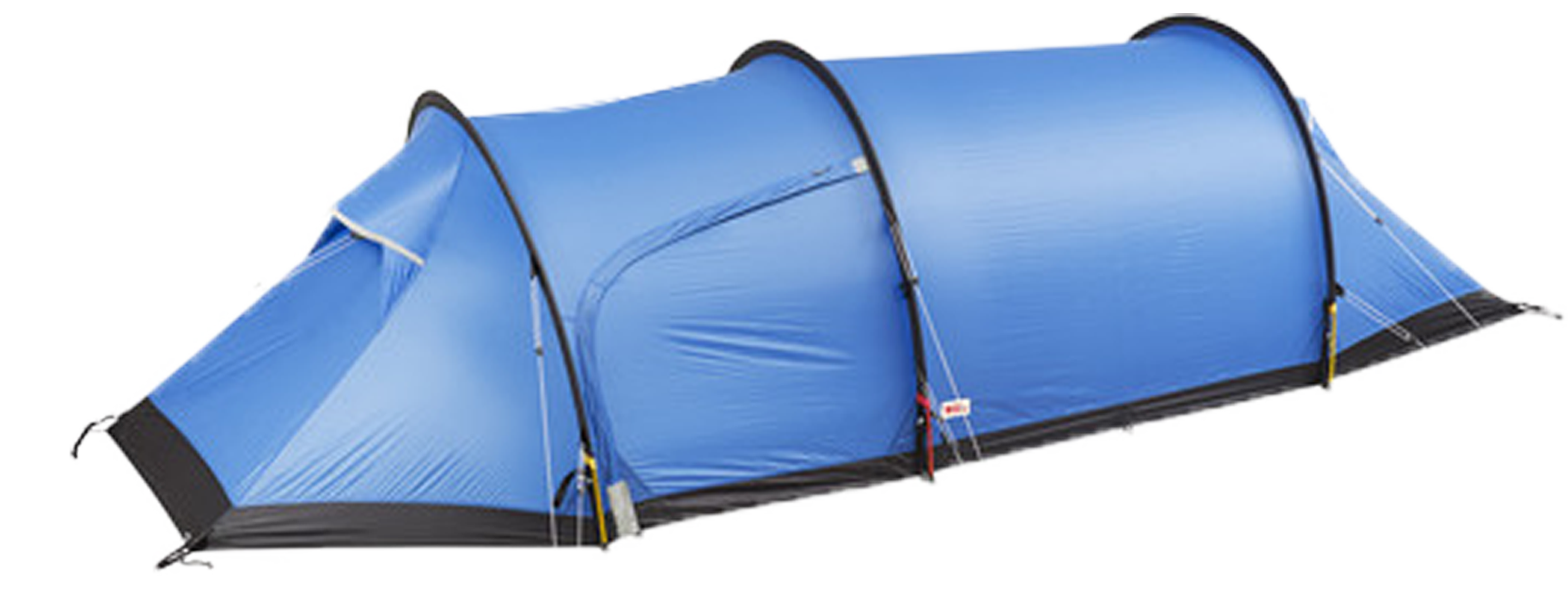A brief history of tents
The birth of the Fjällräven Thermo Tent in 1965 paved the way for Fjällräven's innovative tents of today.
The chirp of birds, the wind in the trees, light morning rain on the tent canvas - if you ask us, nothing beats waking up in nature. That’s why one of the most important things in your backpack is your tent. Nowadays, we have a wide range of tents for all types of adventures. But it wasn’t always so easy to catch a great night’s sleep in the outdoors.

Ancient history - or tents pre-1965
In the early 1960s, most tents were made from a single layer of cotton fabric and they were heavy. When dry, they weighed around three to four kilograms – when wet almost twice that. The alternative was a synthetic tent, but these were either so thin that moisture could force its way into the tent or so waterproof that condensation got trapped, and the air inside was as humid as a rainforest. Since Fjällräven’s founder, Åke Nordin, neither liked carrying a heavy pack nor waking up in a wet sleeping bag, he decided to try to solve the problem.
After countless sketches and prototypes, Åke found a solution that was as simple as it was genius. By combining a waterproof outer tent with a ventilating inner tent, moisture was released from the living area. Condensation was then ventilated out from the inside of the flysheet. Finally, it was possible to wake up warm and dry when out in the wilderness.
Everything changes - the release of the ‘Termo Tent’
In 1965, the first Fjällräven Termo tent was released onto the market. The flysheet was a strong waterproof polyester and the inner tent was a thin, highly ventilating Ripstop polyamide fabric. Weighing in at 1.4 kilograms, it was extremely light and became a resounding success. The following year, a new version of the tent was designed specifically for the Scandinavian Greenland Expedition. It was made larger to reduce “psychological friction" between the occupants who would be spending two months in close quarters with each other. The participants of the expedition raved about the tent and it was again a huge success.
The present - Fjällräven tents today
This model of creating tents for a purpose has been a key aspect in our strategy even today. Each tent model has a specific functionality and it is easy to choose between them depending on which situations and seasons you plan to use your tent in. There is something available for every occasion, from simple, everyday adventures to more challenging or extreme expeditions. Fjällräven has three tent families: Abisko – for all types of outdoor life, which is really low weight, Keb – for when you need extra durability and reliability all year round, and Polar – specialised for winter use in the most demanding and challenging conditions you can imagine.
Each Fjällräven tent goes through rigorous conception, development and testing. Fredrik Hyltén-Cavallius, Senior Designer at Fjällräven, says “In terms of timeline, from the drawing board to the final product takes at least three years.” It’s no wonder that each tent must have both a long lifespan and should serve you well for many, many outdoor experiences. In addition, our tents are made sustainably: using durable materials, fluorocarbon-free impregnation, and methods for anodising aluminium that have minimal impact on our environment.
We would dare to say that nowadays we have a tent available for all tastes, whatever your personal preference may be. These are tents that let you dream a little bigger. Go a little further. Tents that are more than just lightweight - tents that function optimally in the wilderness. And we’re not finished yet, we are determined to be an integral part of the future as well as the history of tents. Watch this space.
Related Product
10 tips for getting your best night’s sleep in a tent
If not for your own sanity, for you camping buddies'. Because everyone prefers a happy camper.
“In nature, we go out to go within”
First-time multi-day trekker Camille share's her trip to Berg Lake Trail in Mount Robson Provincial Park in Canada.

